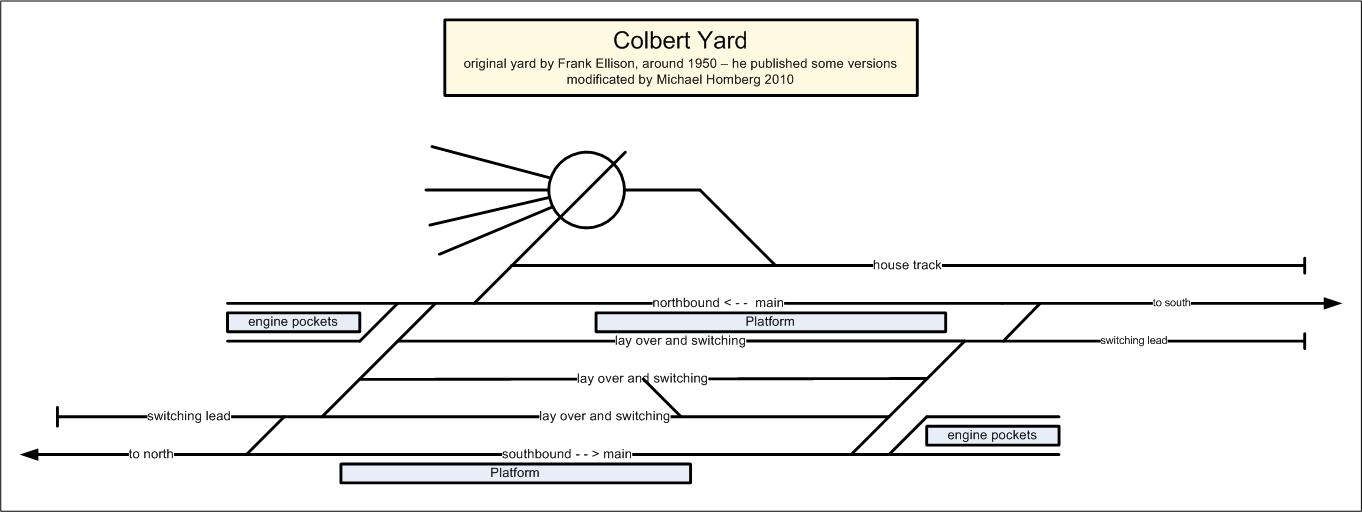Yard Track plans
Colbert Yard: a division point
- Details
- Kategorie: Yard Track plans
- Zuletzt aktualisiert: Dienstag, 06. April 2010 13:58
- Geschrieben von Michael Homberg
Colbert Yard: a division point
Colbert is a yard I would have liked to operate. Unfortunately, Colbert and the Delta Lines do not exist any more since a long time.
Frank Ellison (1887-1964) was one of the earliest famous model railroader. His "O" scale layout was a free-lance system called the Delta Lines. He worked for many years in theatre, and this influenced his ideas about model railroad design.
In the late 1940s and early 1950s, he wrote a series of articles for Model Railroader on "The Art of Model Railroading".
Frank designed Colbert Yard as a division point where all crews, engines and cabooses were changed. In his first layout setup, the northern part was electrified, and all engines were electric locomotives. The southern division had steam engines.
Colbert Yard was rebuilt by Frank, and at least three versions you can find in an online publication of Model Railroader magazine, which was publicized as subscriber content at their website (status: 2009).

My modification of Colbert yard is close to the early version. It is the time of passenger trains, electrical engines and steam.
Being S-curved, Colbert on the Delta Lines looked more realistically than in the straight schematic plan above.
Colbert offers many operations at a small space:
- every train has to change locomotives, cabooses (freight trains only)
- some through freight trains set out blocks of cars (= shorts, which do not go to the end of the next division, but have to go in locals which are origination here)
- southbound and northbound locals are originating here (their cars come from the set out blocks by the trough trains)
- the locals have to be classified here (bring in the sequence the local needs)
- southbound and northbound locals are ending here (their cars are classified to northbound and southbound blocks of cars, and these blocks are attached to the through freights
- Colbert Yard had no industries. The only freight cars ending in this yard were cars for the locomotive service (coal or oil, or diesel, sand, lubricants, ash, …).
The function of Colbert was to change crew and locomotives as quick as possible. Colbert had everything to fulfill this: the track arrangement, the locomotive pockets, and the engine house. And it had nothing more.
Although Colbert has a very "lean" yard design, it needs to be a long yard to look prototypically. When my friend Oliver Hampel and I made a mockup on the floor, it appeared to us that we would need 4 meters in "N" gauge! And this length was without the two switching leads (which Colbert did not have in the original design of Frank Ellison: there, the switching was performed on the main tracks).
Additional information:
- book: Andy Sperandeo: "Freight Yards"; Kalmbach 2004, page 40

